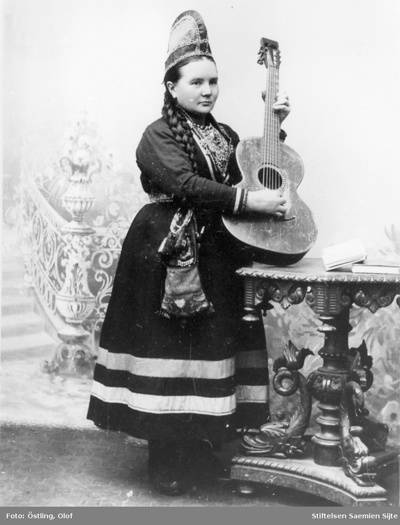The Tabernacle, Vår Frues Gate 2 – Website (further reading) – Sámi City Walk
-
Sámi City Walk
- About the project Sami City Walk
- Digital Guide (for mobile phone)
-
Website (further reading)
- Stop 1: The Old Sámi Names for the Nidelva River
- Stop 2: The Deaf-Mute Institute in Trondheim, Bispegata 9b
- Stop 3: Snøfrid Svåsedatter, at the Archbishop’s Manor
- Stop 4: "The Stable," at the Cathedral Cemetery
- Stop 5: The Tabernacle, Vår Frues Gate 2
- Stop 6: Find of a Sámi Spoon, Søndregate
- Stop 7: The 1917 National Assembly, Methodist Church, Krambugata 6
- Stop 8: Hotel Standard, Brattørgata 3
- Stop 9: Hotel Gildevangen/Bondeheimen, Søndre gate 22b
- Stop 10: The Sámi Mission, Kongens gate 14b
- Stop 11: Tråante 2017, Trondheim Torg
- Stop 12: Anders Porsanger, Hospitalskirka, Kongens gate 70a
- Stop 13: Elen Skum, Tukthuset, Kongens gate 85
- Stop 14: Galgeberget in Steinberget
Sámi City Walk
Sámi City Walk
A city walk through Sámi history in Trondheim

The Tabernacle, Vår Frues Gate 2
The Tabernacle, Vår Frues Gate 2

The Tabernacle at Vår Frues Gate 2 served as the Baptist congregation's meeting place from the time the building was erected in 1885 until 1913. It was here that Marie Stengel held one of her first performances on February 19, 1895. Marie Stengel was a Christian preacher and one of the pioneers of Sámi organization after 1900. She always performed in Sámi clothing, spoke the Sámi language from the stage, and consistently spoke about the Christian faith, temperance, and the Sámi people's "oppressed position." Marie lived for a long time at Gjetveita 9 and was a seamstress before becoming a full-time preacher around 1895. Marie participated in the First Sámi National Congress in 1917, where a portrait of her was painted. The portrait is now displayed in the Sámediggi (Sámi Parliament).
Marie Stengel was from Røros, and used the surnames Christiansen or Kjelsberg before adopting the name Stengel. After she married, she took her husband's surname, Finskog. As a child, Marie was one of the poor Sámi children from Røros who was placed with Norwegian foster parents, both as a form of welfare and as part of an effort to assimilate them. This meant that one of the goals of the arrangement was for Marie and the other children to become Norwegian. They were to forget the Sámi language and culture and cease being Sámi.
In Røros, there was poverty among many Sámi from the 1850s onward. The care of the poor and the expenses related to welfare were the responsibility of the local municipalities. The Poor Law allowed children to be placed with other families. From 1860 to 1883, the Norwegian Parliament (Stortinget) provided additional funding for poor relief in Røros. This extra money was meant to cover the costs of placing poor Sámi children in Norwegian families. The goal was to assimilate the children by having them live with Norwegian families and keep them away from their Sámi families. The second half of the 19th century was marked by increasingly harsh assimilation policies towards Sámi and Kven populations in Norway, and the assimilation of children in Røros is part of this history.
Sources and Further Reading
Dokument 19 (2022 - 2023). Sannhet og forsoning – grunnlag for et oppgjør med fornorskingspolitikk og urett mot samer, kvener/ norskfinner og skogfinner. Rapport til Stortinget fra Sannhets- og forsoningskommisjonen, s. 197 – 199.
Hermanstrand, H. (2021). “To samiske stemmer fra Tråante/ Trondheim”. Heimen vol 58/ 4.
